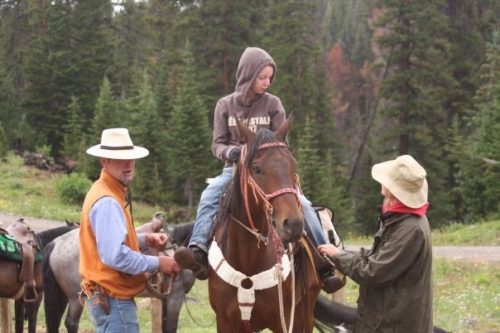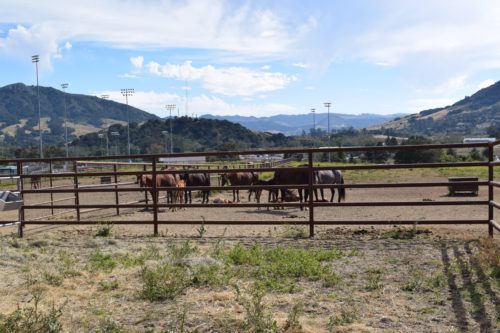My team and I first heard about the horse sale through Rachel’s friend, Emma Eskildsen. Emma worked at the horse unit her senior year and heard through word of mouth that one of the horses had a rare genetic disease that caused it’s skin to peel off when ridden, or when a saddle was put on.
Jessi and I were both skeptic of getting involved with horses, since we had both had traumatic stories involving the animals. Jessi had been hassled by a man in Mexico who attempted to get her to ride a horse, and me who had grown up with a crazy horse-loving mom who tried to get me to ride when I was little even though I hated it. Rachel knew nothing about horses at all – we were off to a good start some may say.

However, we knew that the story was an important one to be told and decided to put our pasts behind us. I set out after class to go get some information on the horse sale, and to see if anyone could confirm the disease. I knew the best place to get information would be in the agricultural building on campus. I went into the office of the department of animal science to find an administrator who could point me in the right direction.
I spoke to Nicole Einfalt who seemed suspicious of my questions, and my motivation behind writing the story. She asked to see my set of questions, and got defense when she saw a question about complications with the horse sale… I could tell something was fishy. She did give me valuable information by giving me the names of the two students in charge of the horse sale: Ashlyn Frost and Annika Moe.
I contacted both students immediately for an interview, and wandered the halls until I found an open door.
I interviewed Dr. Sprayberry who is a vet on campus. She was a bit frantic because a horse had passed away earlier that day, and had yet to be examined. When asked about complications with the horse sale she said, “Not that I am aware of. Horses always get sick, or get a serious injury.” However, there was still no mention of a diseased horse.
We met in class that Wednesday and pitched our story ideas to the class. Our team grew nervous because the diseased horse had yet to be confirmed by an adult, and we were scared our story was going to fall through. After that class meeting, we all went back to the agriculture building to see if we could get more information.
We spoke with an administrator of the department of animal science that gave us attitude and contact information we already had. We spoke to Professor Burd that gave us good insight on the horse sale, and how the students work with the horses.

After our conversation with him, we returned to Dr. Sprayberry and struck gold. She confirmed that the horse had the disease, and that they were unsure if the foals had the disease or not – we had our story!
From there, we set up more interviews with Dr. Burd, an interview with the supervisor of the horse sale, Julie Yuhas, and were able to visit the class in which students care and tend for the foals.
Jessi and I spoke to Dr. Burd for about forty minutes on May 24th and got more information about the disease. “It was interesting finding out about the HERDA disease, because I never really thought that horses have health problems like humans do. It was great to talk to Dr. Burd because he’s very knowledgable about the disease and how to care for horses in general,” said Jessi.

Rachel and Jessi headed up to the horse unit to meet with Julie Yuhas and the foaling class. Unfortunately I was unable to attend because I had class during that time. Rachel said, “I really didn’t know much about horses and I’m honestly kind of afraid of them. But being around them and the girls, even just for a few hours, made me appreciate the animals so much more and the work these students put into caring for them.”
We were able to get all the information we needed from Dr. Burd, Dr. Sprayberry and the students in the foaling class thanks to Julie Yuhas. Looking forward to reading the story written by Jessi Armstrong and the video interview by Rachel Mesaros.